2025.10.20. Venerable Yongseong’s Enlightenment Day Memorial Service, Daegu-Gyeongbuk Division Members’ Day
Hello. Today, the 29th day of the 8th lunar month, marks the 139th anniversary of Venerable Yongseong’s enlightenment. Every year, Jungto Society commemorates this day by reflecting on Venerable Yongseong’s life.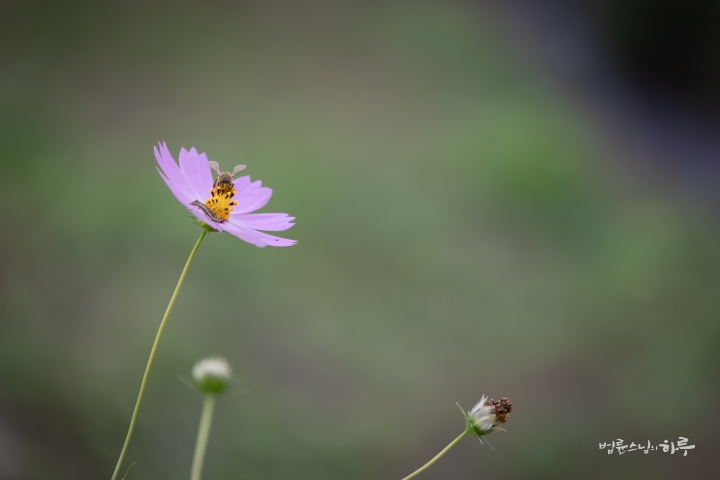
After completing morning practice and meditation, Sunim departed from Dubuk Jungto Retreat Center at 8 AM to attend the memorial service at Adomoryewon.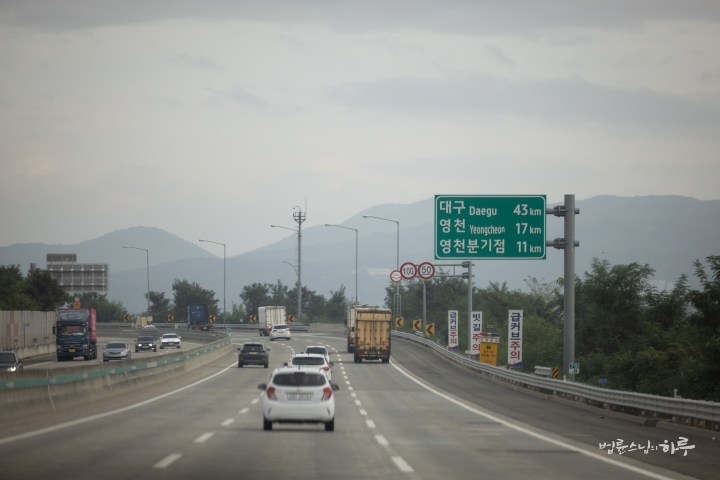
After driving on the highway for an hour and a half, Sunim arrived at Adomoryewon at 9:30 AM. Many volunteers were busily moving around to welcome people. When Sunim entered the entrance, everyone gave him an enthusiastic welcome.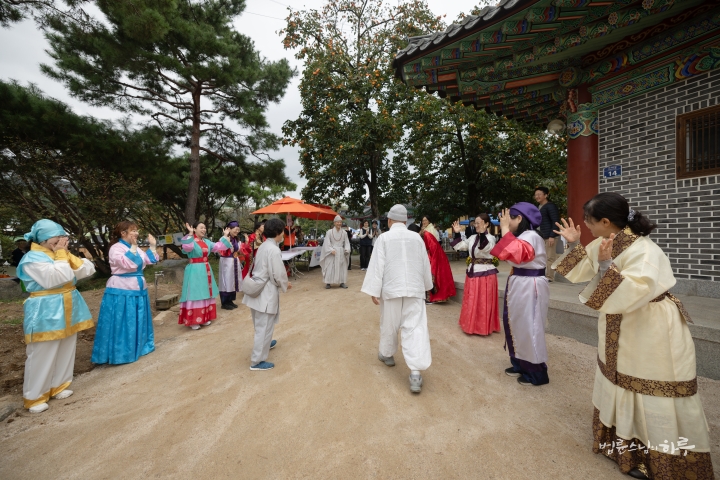
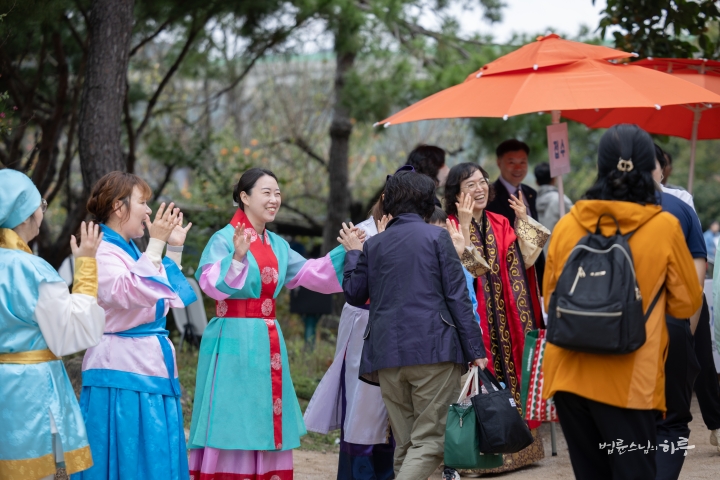
Local dignitaries came to greet Sunim, including staff from the Gumi Culture and Arts Department, the president of Gumi Urban Corporation, the village chief of Dogae-myeon, and officials from the Silla Buddhism Initial Transmission Site Development Committee.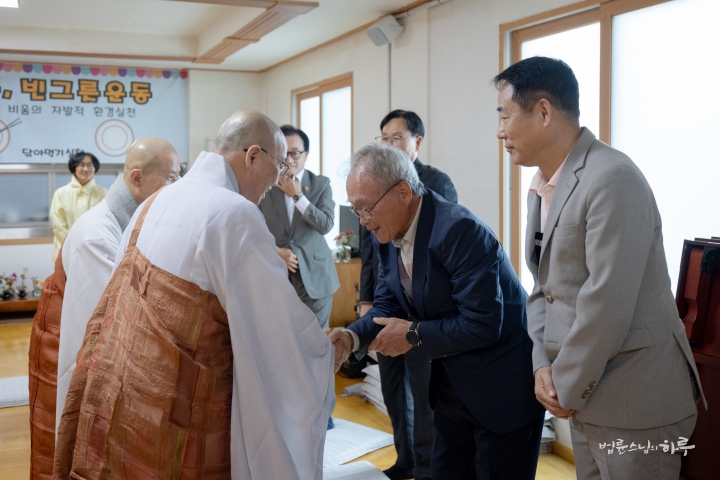
At exactly 10 AM, participants moved to the courtyard for the memorial service. Many Jungto Society members from across the country attended, including members from the Daegu-Gyeongbuk Division.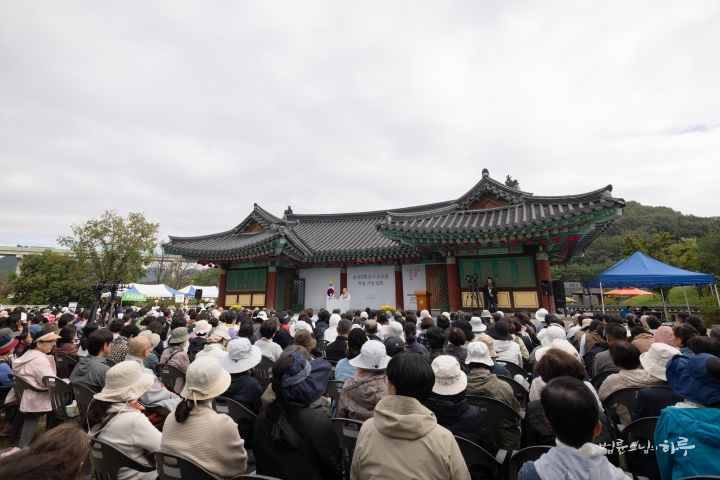
With approximately 510 people filling the venue, the ceremony began with the recitation of the Three Refuges and the Heart Sutra.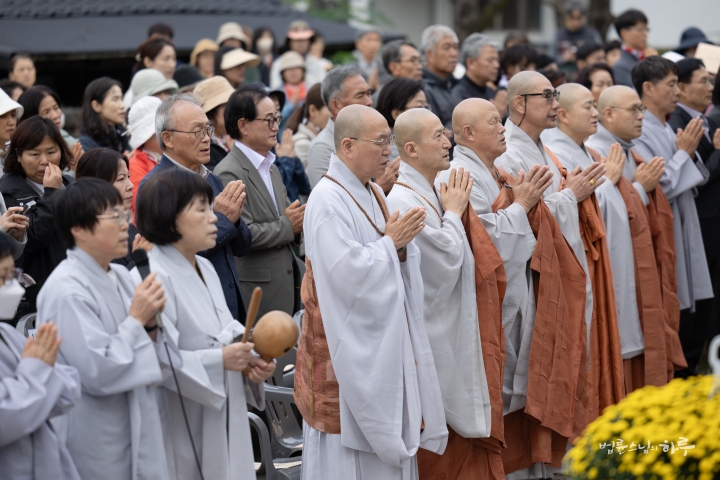
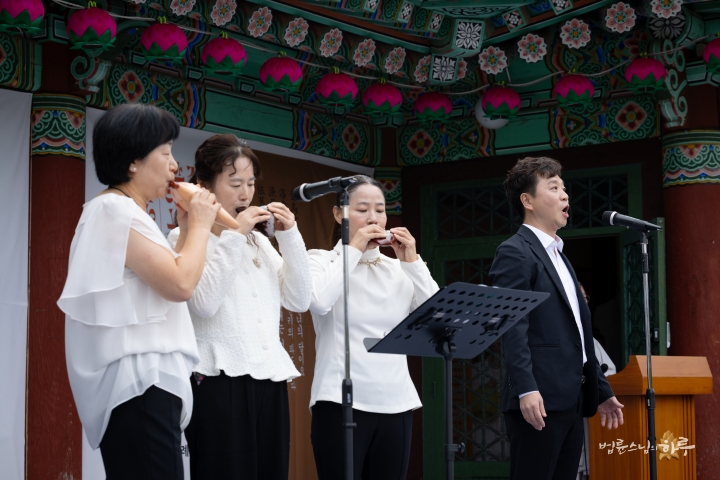
This was followed by the salute to the national flag, singing of the national anthem, a moment of silence for fallen patriots, and a video presentation of Venerable Yongseong’s biography. The MC then read congratulatory remarks from Gyeongbuk Province Governor Lee Cheol-woo.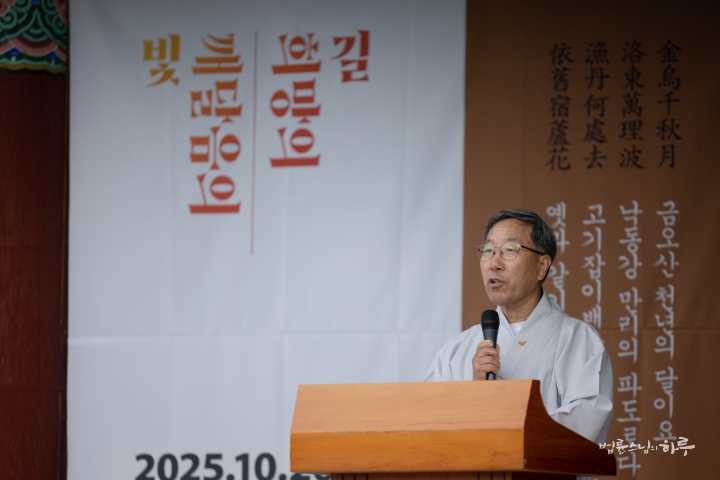
Jungto Society members also participated in the memorial service by watching the live YouTube broadcast online.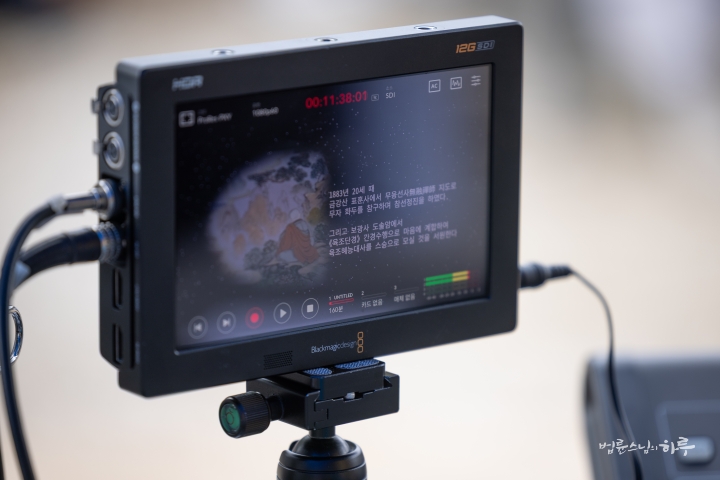
Next, to commemorate Venerable Yongseong’s Enlightenment Day, members of the Daegu-Gyeongbuk Division presented a musical performance titled “Youth, Yongseong’s Dream.”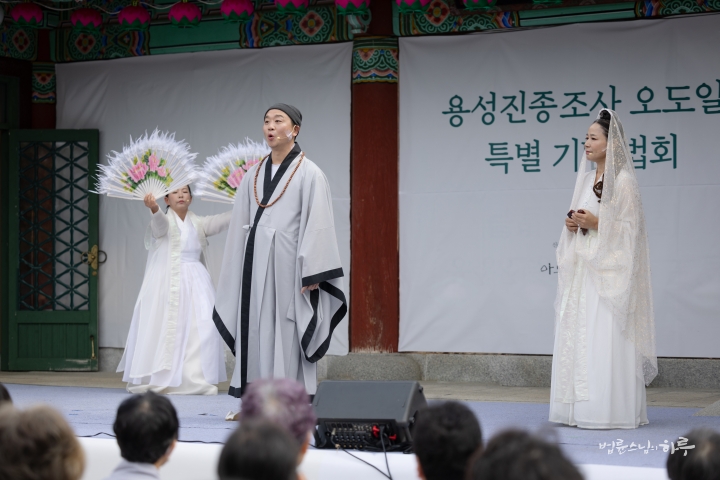
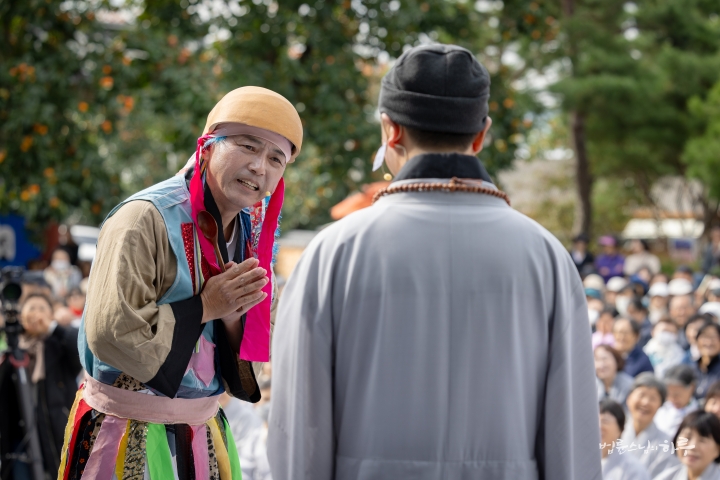
The moving performance allowed the audience to experience the hope and earnest aspiration for enlightenment that young Yongseong dreamed of at Adomoryewon 140 years ago in Joseon.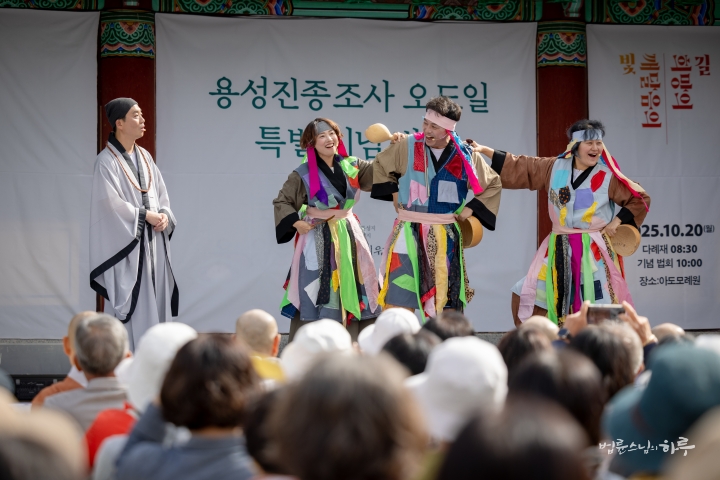
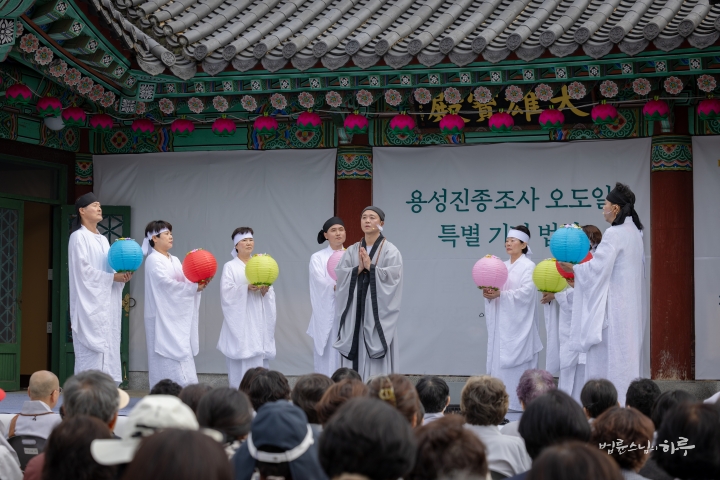
The message that the most precious hope emerges from the deepest despair touched everyone’s hearts. Everyone gave a big round of applause to the Daegu-Gyeongbuk Division members for their moving performance.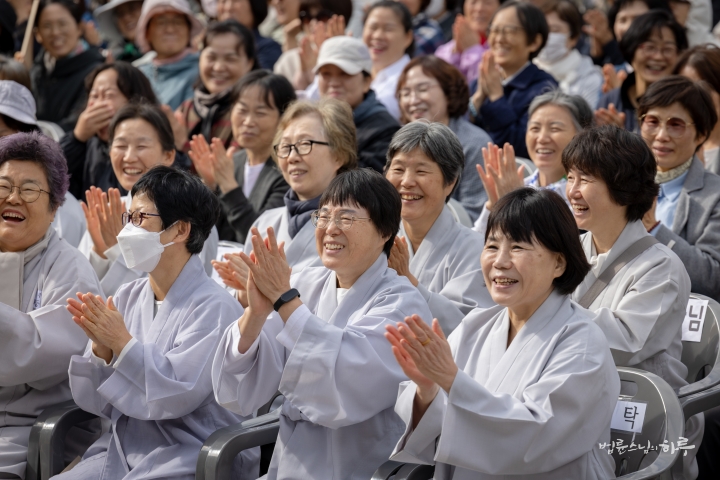
Everyone then sang “Song of All Koreans” together. The lyrics were written by Venerable Yongseong Jinjong and arranged by Venerable Bulsim Domun. Led by the 33-member Daegu-Gyeongbuk Division choir, symbolizing the 33 representatives of the nation, everyone sang all three verses with vigor.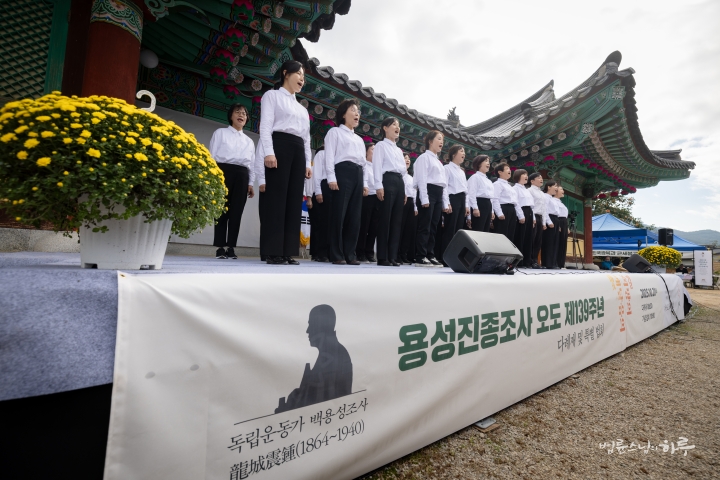
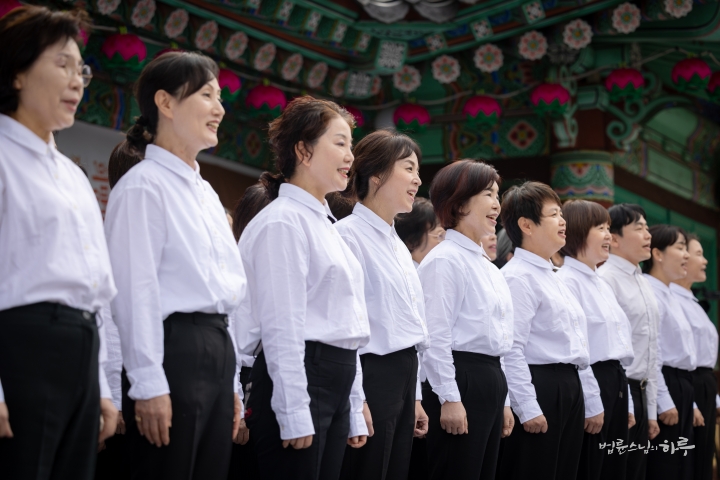
Next, Venerable Pomnyun Sunim gave a commemorative Dharma talk titled “Light of Enlightenment, Path of Hope” to mark Venerable Yongseong’s Enlightenment Day. Sunim spoke about the historical significance of Adomoryewon, where the memorial event was being held.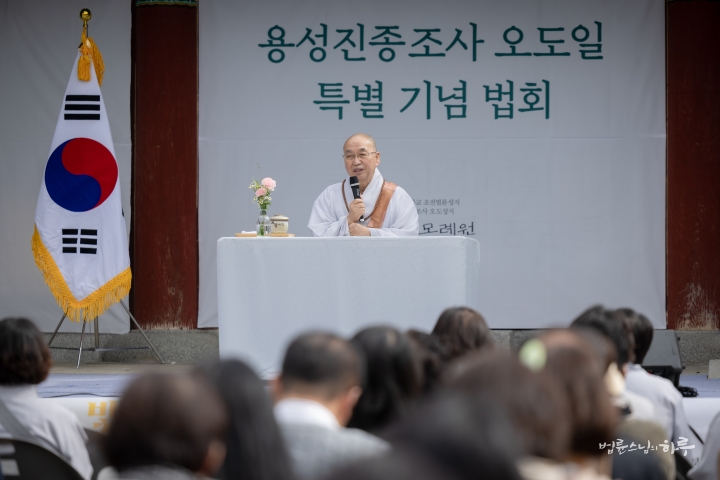
“Today marks the 139th anniversary of the enlightenment of Venerable Yongseong Jinjong, the 68th patriarch in the lineage of Shakyamuni Buddha and the Buddhist representative among the 33 national representatives of the March 1st Independence Movement. On this meaningful day, we are holding this memorial ceremony at Adomoryewon, the sacred site where Venerable Ado first transmitted Buddhism to Silla.
The introduction of Buddhism to our country dates back approximately 2,000 years. After Buddhism was first transmitted to Gaya by Venerable Jangyu, it spread to Goguryeo and Baekje through China, and then from Goguryeo to Silla about 1,600 years ago. About 150 years after Buddhism entered Silla, it was finally recognized as the state religion through the martyrdom of Ichadon. For the following 1,500 years, Buddhism has taken deep root in the spirit and culture of our people. Additionally, it has been over 6,000 years since the gates of heaven first opened and the people who worshipped heaven migrated to this land to establish Baedalguk Sinsi. In this land of such profound national history, the Buddha’s Dharma has been transmitted, allowing the brilliant culture of this sacred nation to flourish.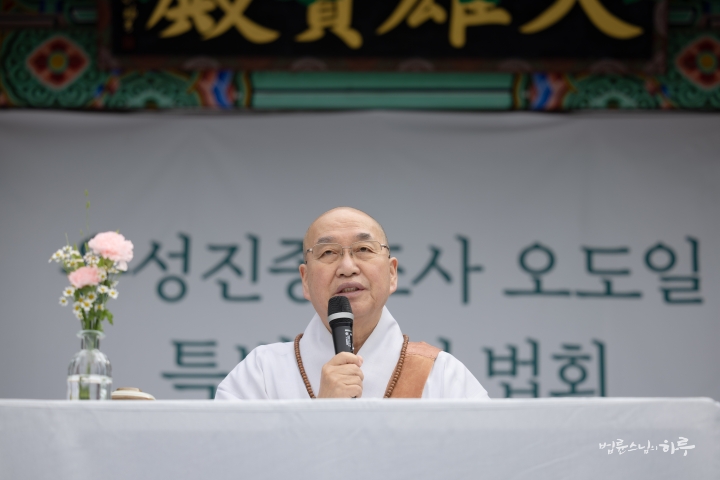
Dreaming of a New Nation Where the People Are the Masters
However, about 120 years ago, we lost our country to the Japanese Empire and faced an era of unprecedented shame and suffering in our national history. During this dark period, Master Yongseong envisioned not merely the independence of our nation, but the establishment of a ‘Republic’ where the people, not the monarch, would be the masters of the country. The March 1st Movement was not a restoration movement for the Korean Empire, but rather the starting point for establishing the Republic of Korea. Thus, just one month after the Declaration of Independence on March 1, 1919, the Provisional Government of the Republic of Korea was established in Shanghai in April. 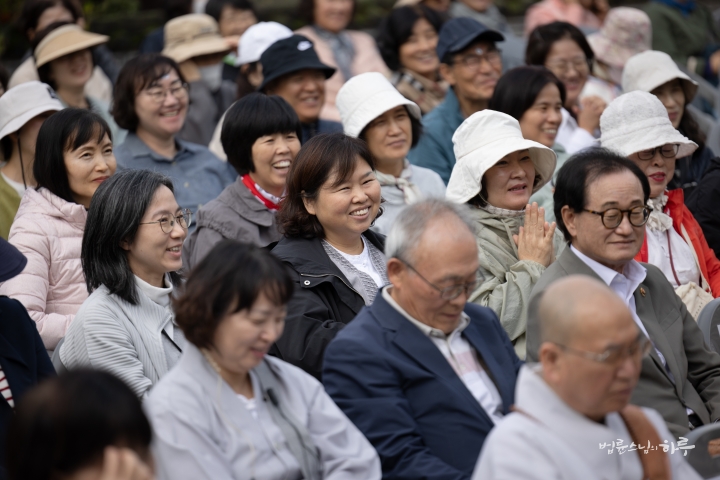
On the surface, the March 1st Movement appears to have been a spontaneous independence demonstration, but in reality, it was the result of long and secret preparations. While the official loss of sovereignty occurred with the Japan-Korea Annexation in 1910, the actual violation of sovereignty had already begun with the Eulsa Treaty of 1905. Subsequently, Emperor Gojong dispatched secret envoys to international conferences to appeal against this injustice, but the imperialist powers ignored our desperate pleas. In response, Master Yongseong secretly transferred substantial funds to Shanghai to prepare for the establishment of a government in exile. When the end of World War I opened possibilities for the independence of smaller nations, independence was declared on March 1, 1919, and the Provisional Government was immediately established in Shanghai. While these events appeared to be the activities of a few prominent figures, they were actually the fruition of meticulous and clandestine plans centered around Master Yongseong. 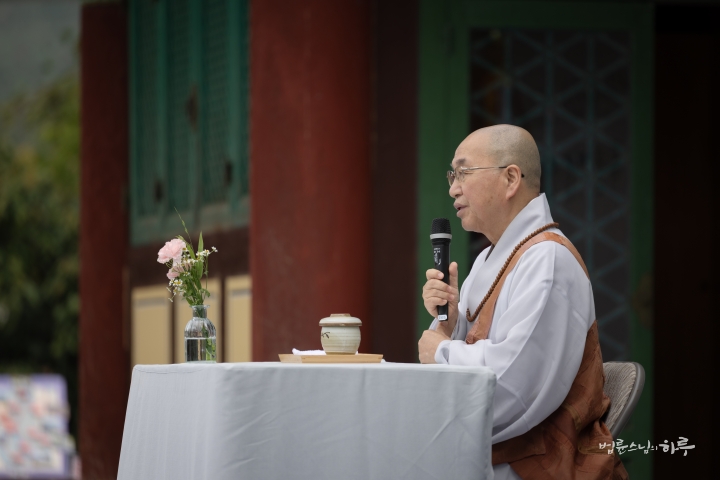
Master Yongseong was born in 1864 in Jukrim-ri, Beonam-myeon, Namwon-gun, Jeollabuk-do (now Jangsu-gun). At the age of 14, after meeting the Buddha in a dream and receiving a prophecy, he was drawn by an inexplicable karmic connection to Deokmilam Temple at Gyoryongsan Fortress in Namwon, some 50 ri away. There, under the guidance of Master Hyewol who had the same dream, he practiced diligently for three years, laying the foundation to carry on the Buddha’s true Dharma. Subsequently, he met various teachers and sequentially achieved the Path of Seeing, the Path of Cultivation, and the Path of No More Learning. Finally, he stayed near Moryejeong at Adomoryewon, and beginning on the 5th day of the 8th lunar month—the day of Saint Ichadon’s martyrdom—he entered into intensive practice. After 24 days of rigorous practice, on the 29th day of the 8th lunar month, he finally attained great enlightenment.
Where Master Ado’s Dharma Transmission, Ichadon’s Martyrdom, and Master Yongseong’s Enlightenment Live and Breathe
The reason I share this long history today is to reflect together on the profound historical significance of this place where Master Yongseong attained enlightenment. This is the sacred site where the first turning of the Dharma wheel occurred in Silla, where the Buddha’s teachings were first transmitted. This very Moryejeong is where the spirit of Dharma transmission and pioneering spirit of Master Ado lives on—he who concealed his identity and worked as a servant to spread the Dharma in Silla. And it was here that Master Yongseong began his final practice on the anniversary of Saint Ichadon’s martyrdom, who gave his life for the Buddha-Dharma, and ultimately achieved enlightenment. This result was not mere coincidence, but the fruit of practice carried out under his teacher’s guidance and in accordance with that intention. 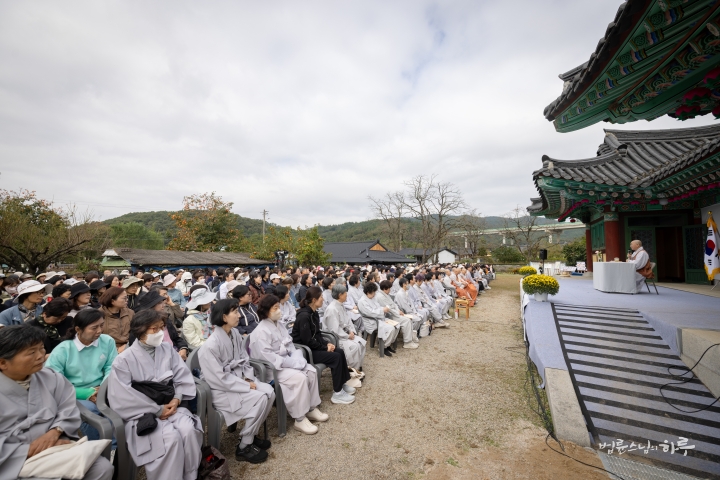
Master Yongseong was a pioneer of the Buddhist reform movement to realize the Buddha’s true Dharma in this land, and a patriot who dedicated himself to recovering our nation and establishing the Republic of Korea where the people are sovereign. The significance of this sacred site, imbued with such noble history and spirit, cannot be revived merely by building temples and parking lots. Development of sacred sites without embodying their spirit results only in outwardly splendid but ultimately empty shells of history.
Today, our nation has achieved unprecedented development globally by overcoming countless difficulties. This was possible not because of those who settled for colonial rule or collaborated when we lost our country, but because of those who preserved our national identity and dedicated themselves to independence, and because we had the core strength to preserve our unique culture and spirit rather than blindly imitating foreign civilizations. Now, the Republic of Korea shines in the world not only through economic success but also culturally. However, the reality that the North and South are still swayed by the interests of major powers, and that the danger of war is rising again despite having already experienced the tragedy of fratricidal conflict, clearly shows our lack of spiritual independence. 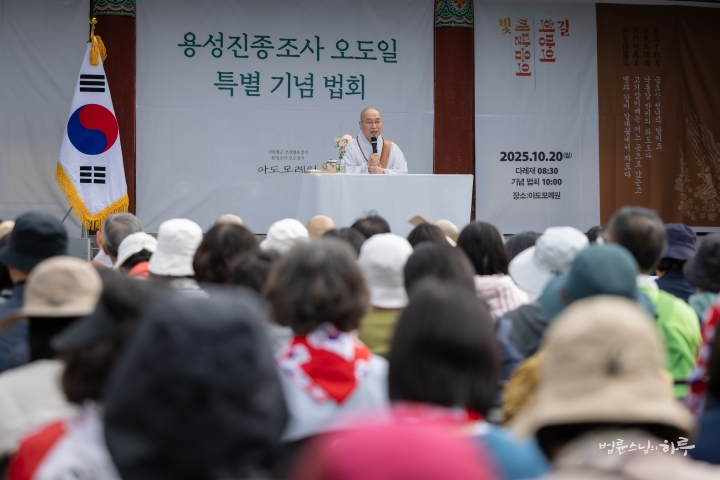
The reason we seek to restore the Silla Chojeon Beomnyun Sacred Site here is not merely to create something aesthetically pleasing. We aim to restore a sacred site where three spirits come alive: the pioneering spirit of Monk Ado, who planted the seeds of Buddhism even during times of persecution by removing his robes and working as a farmhand; the martyrdom spirit of Ichadon, who sacrificed his own life for the official recognition of Buddhism; and the patriotic spirit of Master Yongseong, who devoted his entire life to reclaiming the nation and building a new world. If we wanted to build a large temple or create a tourist attraction, we could do so anywhere else. However, our reason for cultivating this place is to create a space where people can learn and experience these foundations of dharma propagation, martyrdom, and patriotism—not just external appearances. Though it may now appear to be merely a small, abandoned spring, we must preserve the right spirit and prepare for the seeds to sprout and flowers to bloom when conditions ripen. Today, we are holding this ceremony outdoors without a grand dharma hall, but compared to the times when Master Yongseong engaged in the independence movement or when Monk Ado spread the dharma, our current conditions are incomparably better.
From this perspective, we must deeply engrave and commemorate the historical significance of Master Yongseong’s enlightenment here, where he awakened beings from their ignorance and radiated the light of Buddha. The historical value and symbolism are even greater considering that this enlightenment began at Moryejeong, where Buddhism was first transmitted, and on the anniversary of Ichadon’s martyrdom, who gave his body for the dharma. 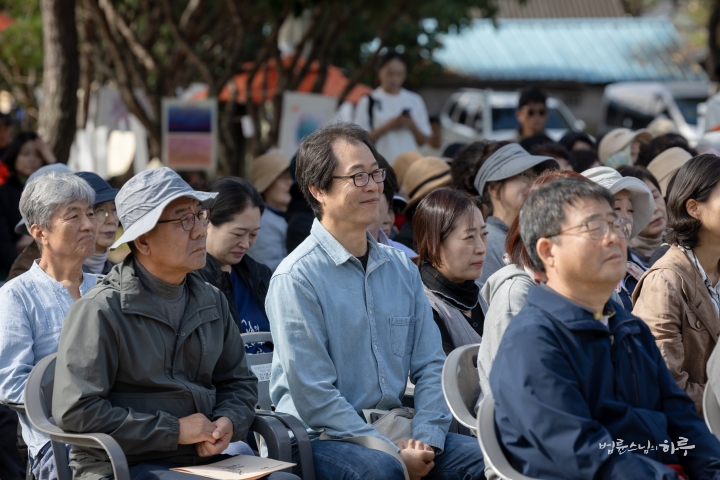
The reason we hold this commemorative ceremony today is not merely to perform a ritual. It is an opportunity to reflect on that spirit in our hearts and contemplate how we can carry forward its meaning in pioneering the future that lies before us. This is also why we seek to establish training centers at Jangsu Jukrimjeongsa Temple and Adomoryewon. In today’s chaotic international order and amid North-South confrontation, we need spaces where citizens can learn and practice the dharma-spreading spirit of Venerable Ado, the martyrdom spirit of Ichadon, and the patriotic spirit of Master Yongseong in order to preserve peace and continue development.
A young practitioner of merely twenty-two years attained enlightenment at this very place, personally achieving the state of nirvana free from suffering, and played a major role in recovering the nation while reviving the spirit of Buddhism that had declined during the 500 years of the Joseon Dynasty. Right here is where Master Yongseong’s new Buddhist movement and the spirit of modern Buddhism began. This aspiration has been carried forward based on the lamp-transmission spirit of successive masters and will continue to be passed on in the future. 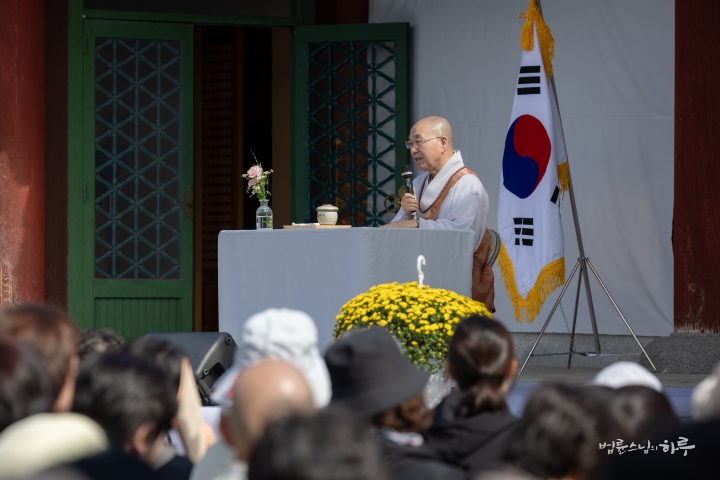
The spirit of Master Yongseong has not yet fully blossomed. His vision has not spread throughout the entire Korean Buddhist community, but his legacy has been passed down through Master Dongheon Wangyu and Master Bulsim Domun. Master Bulsim Domun established this Adomoryewon, providing us with a foundation to honor Master Yongseong’s vision today. Now, what we descendants must do is clear. We must make this place the fundamental root of Korean Buddhism and develop it into a national pilgrimage site so that all citizens can inherit this spirit. I would like to express my deep gratitude to everyone who has joined us today. Let us all pledge here to ensure that Master Yongseong’s enlightenment, patriotism, and spirit of intellectualization, popularization, and practical application of Buddhism will bloom again on this land, and with this commitment, let us conclude this meaningful ceremony.” 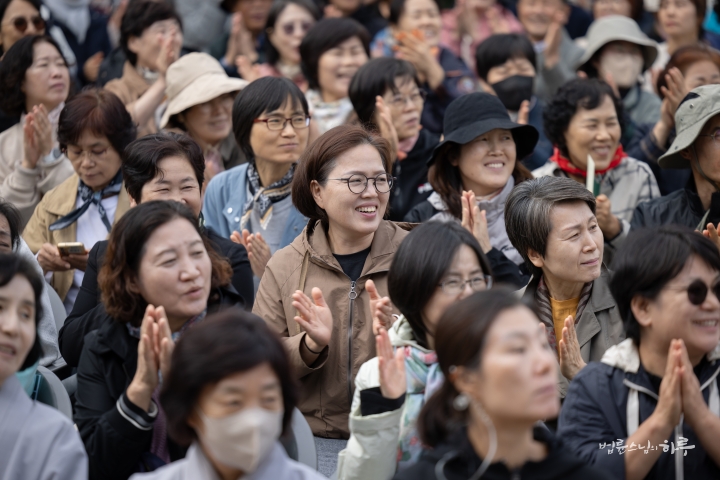
The ceremony concluded with the Four Great Vows, with all Jungto Society members pledging to work together for peace and unification on the Korean Peninsula, inheriting Master Yongseong’s lifelong dedication to national independence and Buddhist revival.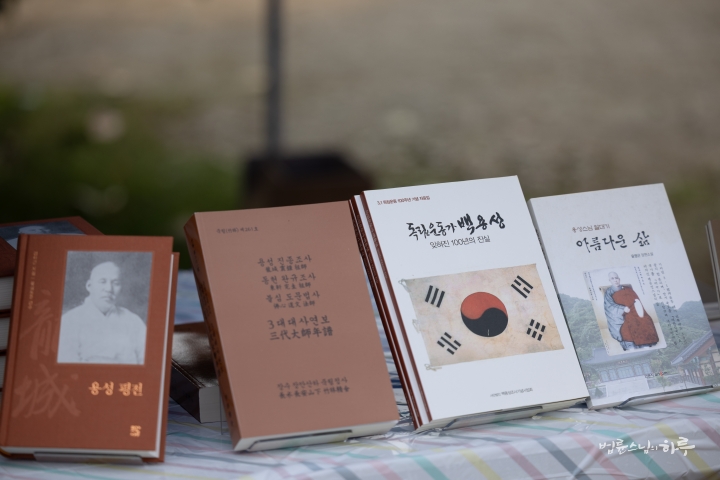
Sunim had lunch with the attending dignitaries. During the meal, they exchanged various opinions on what perspectives government officials should have and how to develop this Adomoryewon site to make it a meaningful space for the Korean people.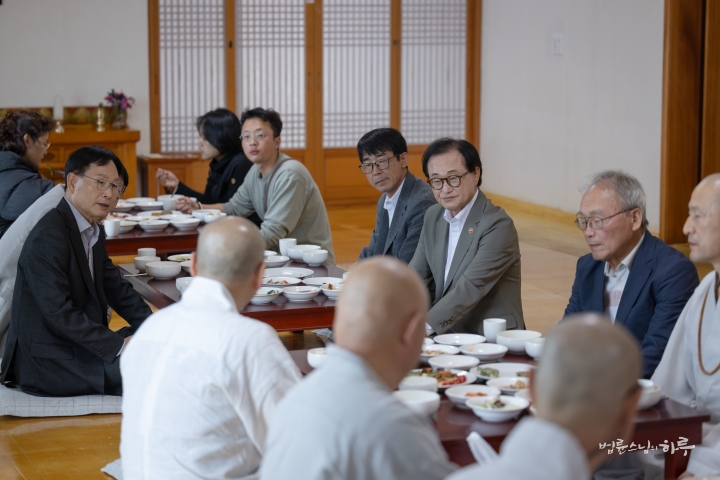
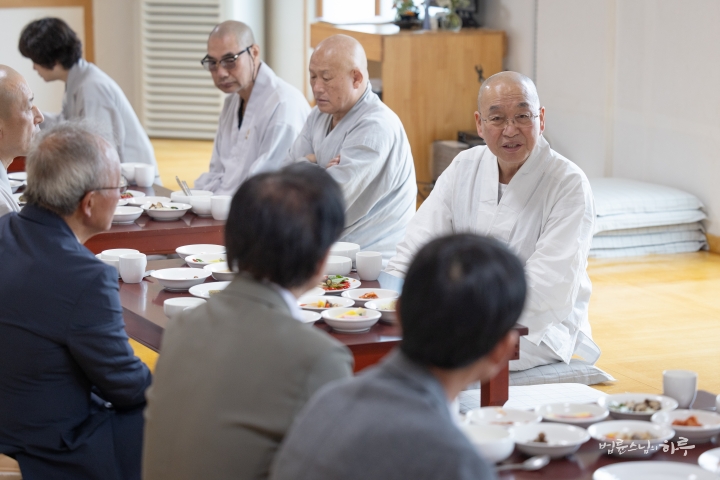
Gumi City has been operating a Buddhist Culture History Museum, Experience Center, and Storytelling Center on this site, and they were concerned about how to attract more citizens to visit. Sunim offered various suggestions.
Members of the Daegu-Gyeongbuk branch scattered in small groups and had lunch with the packed meals they had brought.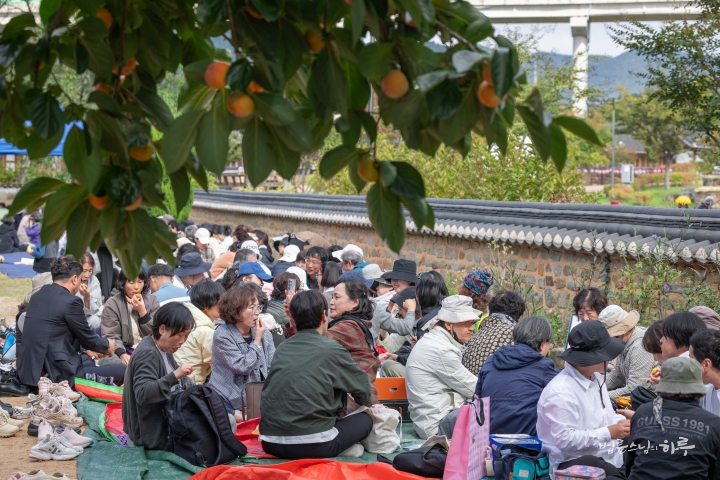
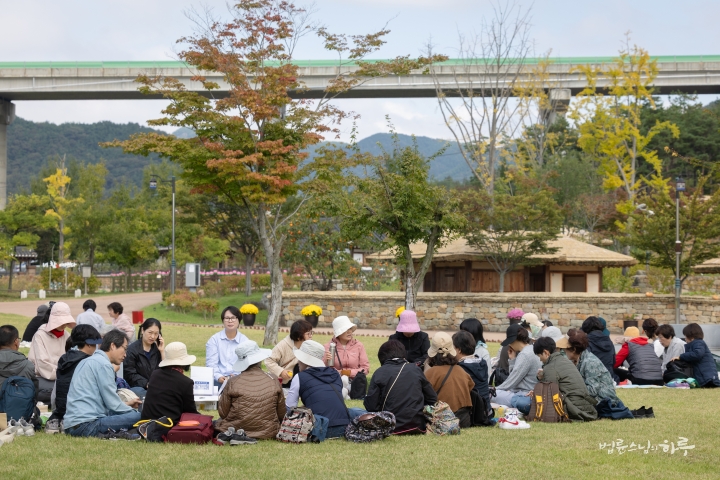
During lunchtime, various booths were set up throughout the area for environmental practice activities and to commemorate the achievements of Master Ado, Morye Jangja, and Master Yongseong. All members enjoyed walking around Adomoryewon and having a fun time.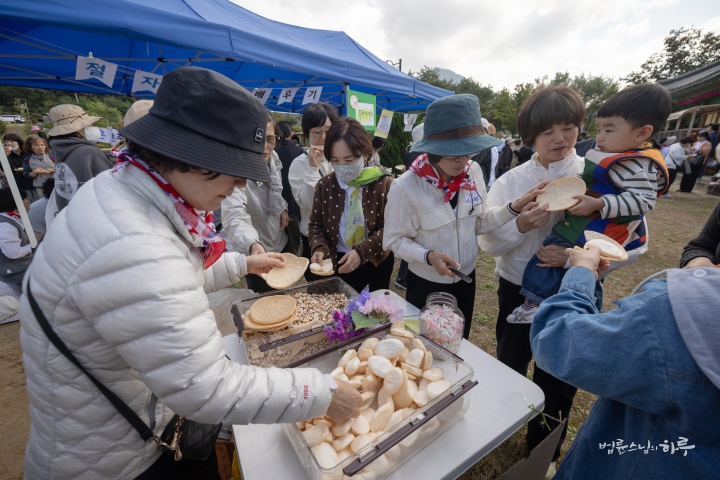
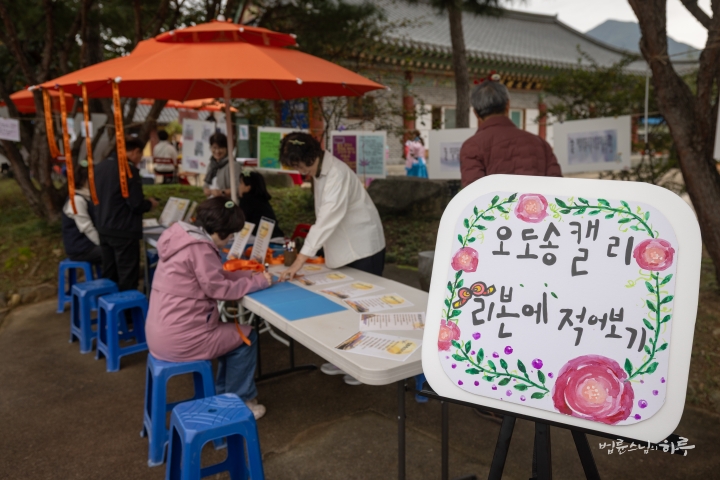
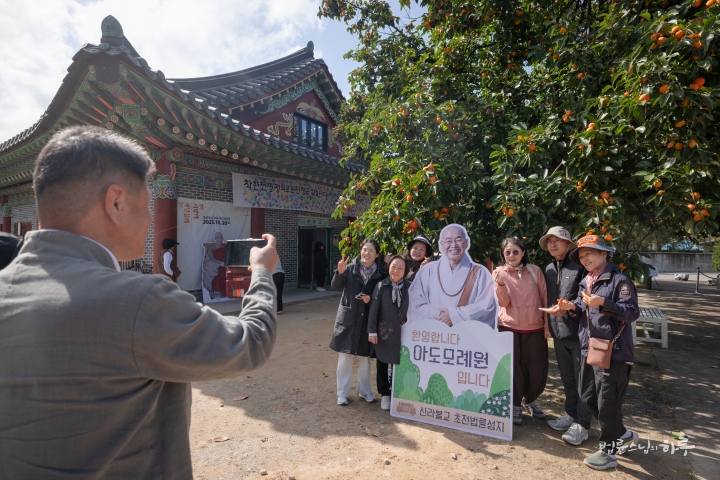
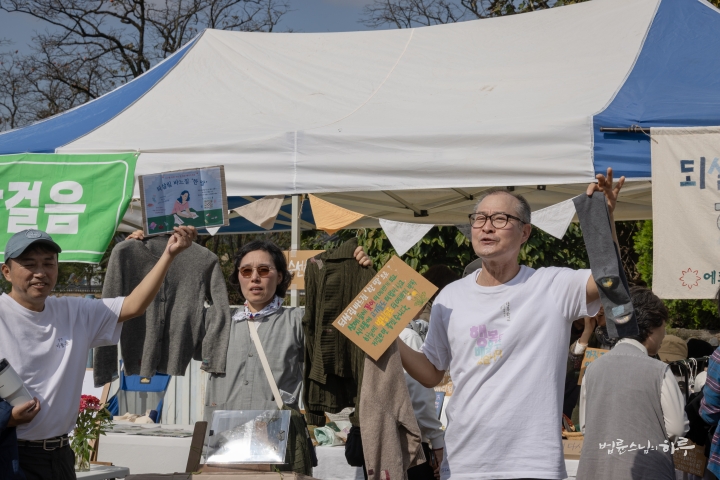
At 1:30 PM, the Daegu-Gyeongbuk Branch Members’ Day event began. The Suseong Choir opened the event with an energetic performance of “Young You” accompanied by guitar.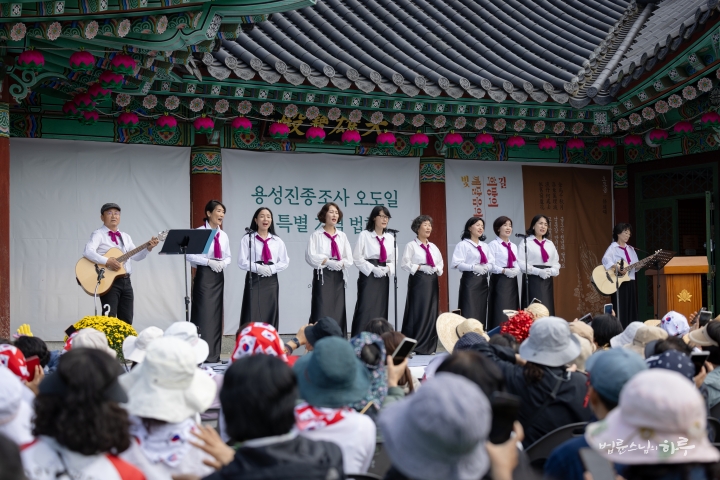
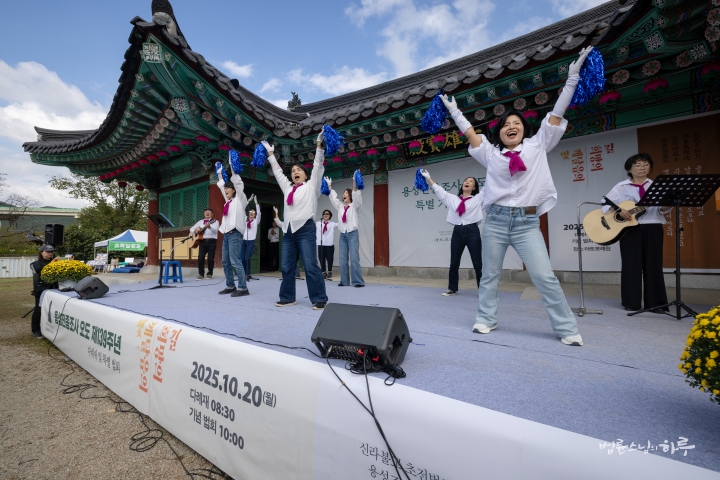
Following this, all members present participated in a Mosaic Buddha flash mob, uniting their hearts in spreading the dharma.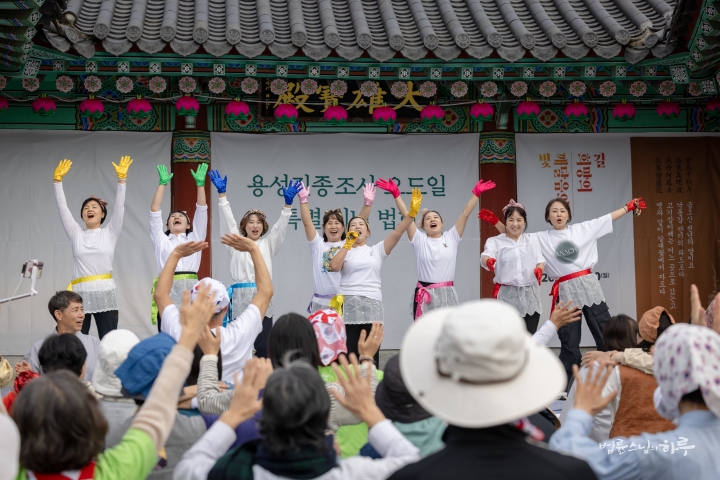
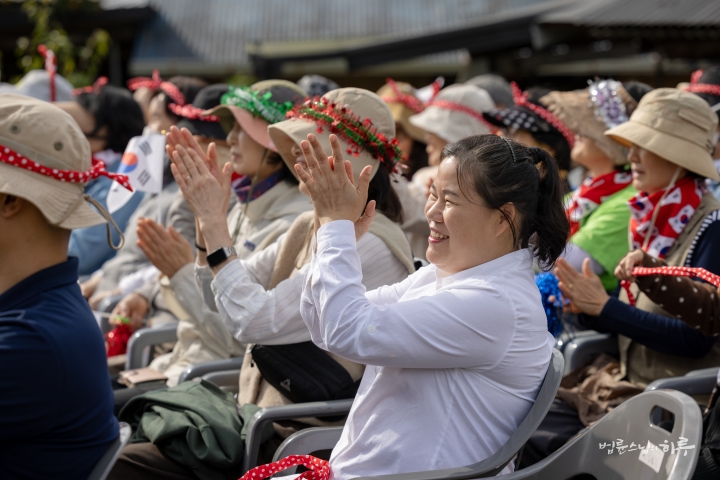
After the Three Refuges and Heart Sutra, they heard greetings from the President of Jungto Society and had time to introduce each local chapter. Gyeongju, Gumi, Dalseo, East Daegu, Suseong, and Pohang chapters introduced themselves with enthusiastic chants and songs. The Members’ Day event began energetically with entertaining performances prepared by each chapter.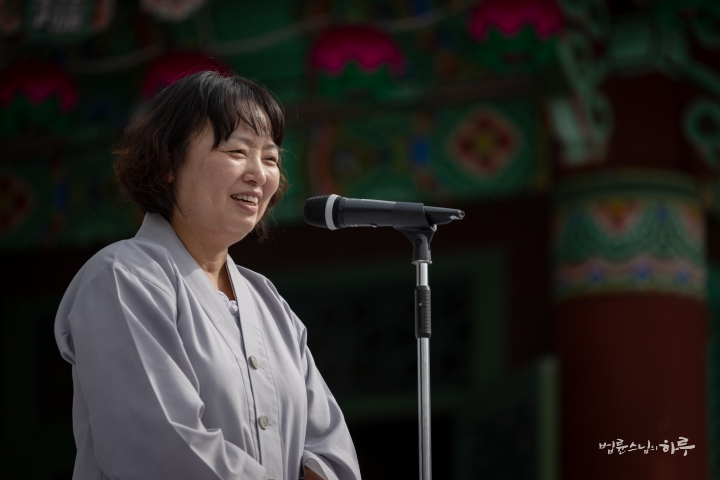
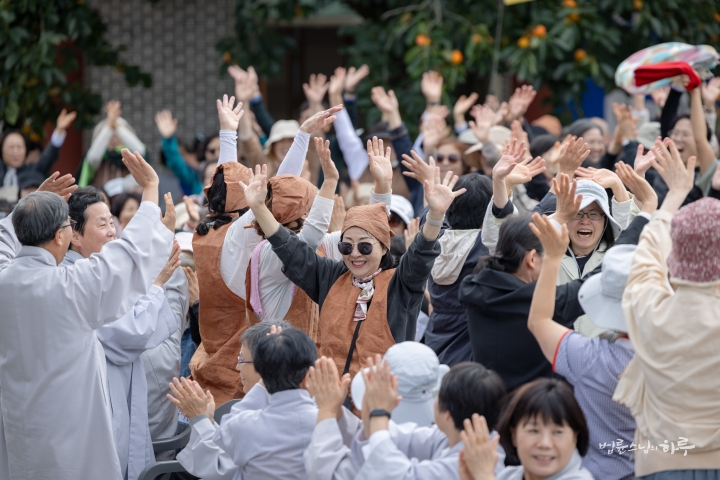
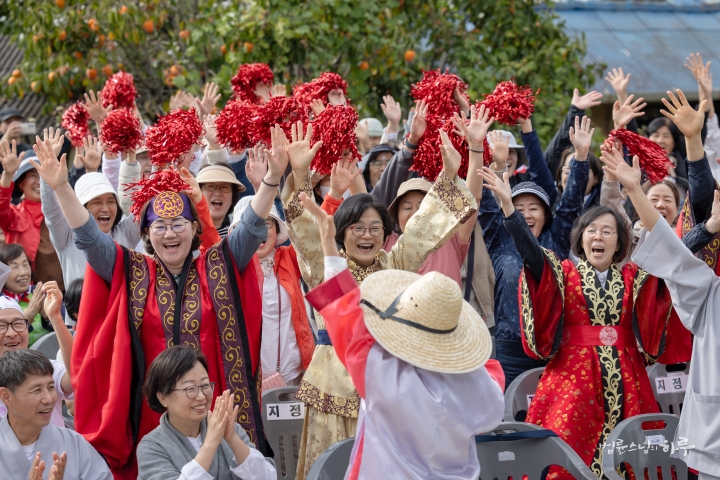
Leaving the laughter and applause behind, Sunim came up to the podium to continue the dialogue. With a bright smile, Sunim gave his greeting.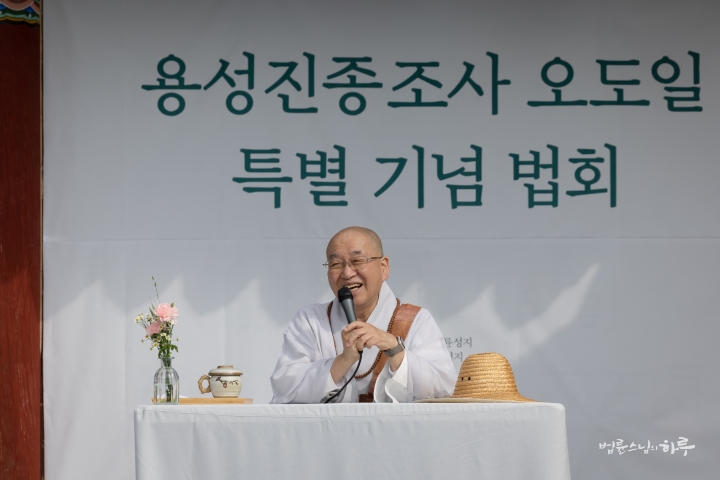
“Members of the Daegu-Gyeongbuk branch, thank you all for your hard work. Today is truly a clear day after a long time. The sky is blue, and the persimmons are ripening red. I’m so happy to meet you all on such a beautiful day. If you keep jumping around and having fun like you just did, it seems like your worries would naturally disappear, so I wonder if we even need to have a Dharma Q&A today. But if you have any questions, shall we start our dialogue?” 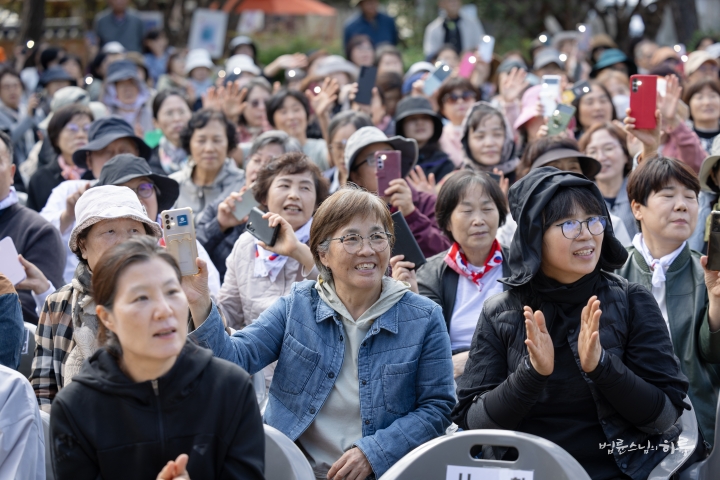
First, people who had pre-registered their questions asked Sunim. Over the course of two hours, nine people had conversations with Sunim. One of them sought Sunim’s advice on how to help her elementary school son who becomes anxious before going to school and doesn’t want to leave the house, and whether the lack of intimacy in her marriage might negatively affect her child.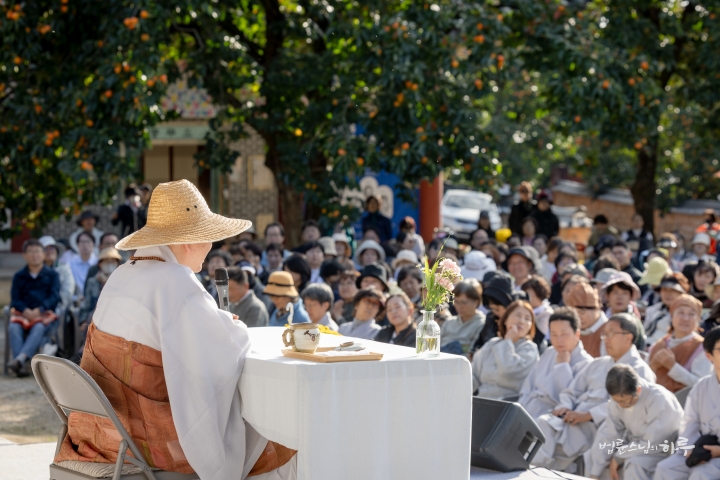
How Can I Help My Child Who Is Anxious That Mom Won’t Be Home?
“It would be good to take your child to a neuropsychiatrist who specializes in child psychology counseling. Generally, neuropsychiatry primarily uses medication treatment. When we get angry or depressed, certain substances are secreted in our body. If there’s too much or too little of these substances, it causes problems in mental functioning. So if there’s too much of a certain substance, medication is administered to reduce or neutralize it, and if there’s too little, medication supplies the substance to achieve balance. On the other hand, counseling psychology doesn’t use medication treatment but heals wounds and resentments in the unconscious mind through dialogue. The approaches are somewhat different. They’re different approaches to the same patient.” 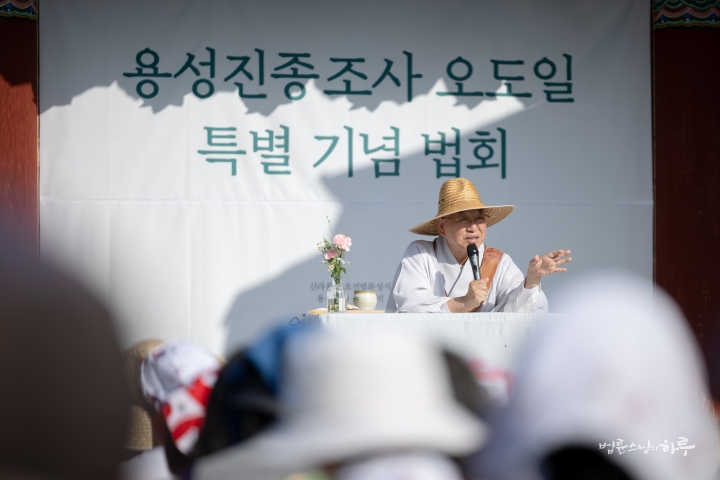
“From what I see, our current psychiatric field has the following problems. Some patients can be treated simply with medication, but counseling psychologists try to treat them through counseling without medication, which takes a long time. Other people have emotional wounds that need to be healed through psychological counseling, but psychiatrists may only provide medication without psychological treatment. In American neuropsychiatry, several counseling psychologists always work alongside doctors. The doctor examines the patient’s condition, prescribes medication, and monitors its effectiveness. Then when referred to the counselor, the counselor provides the doctor with information about the patient’s condition through psychological counseling. When counseling treatment and medication treatment complement each other like this, the treatment rate becomes much higher. These days, there are specialists who specifically study child psychology. Of course, general psychiatrists also treat children, but the psychological mechanisms of young children and adults are somewhat different. In large cities, there are psychiatrists who specialize in child psychology, so it would be good to visit one for consultation.”
“When a child doesn’t go to school or only plays computer games continuously, the cause can sometimes be habitual. Just as gambling becomes a habit, playing computer games can become habitual and continue. However, in most cases, the cause of such behavior is anxiety. Because they’re psychologically anxious and can’t control that feeling, they can’t stay still and need to smoke or play games. Addiction is very often related to anxiety disorders. Since such people are psychologically anxious, no matter how much you scold them or try to change their habits, it doesn’t work well.” 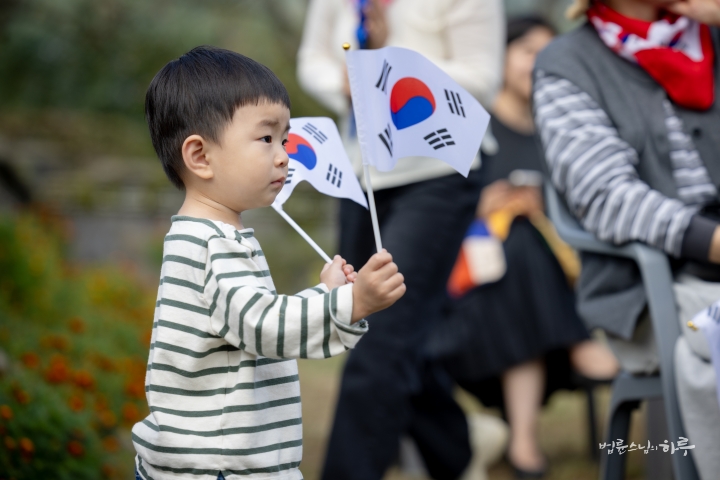
It’s natural for students to go to school. However, if a child would rather die than go to school, this is not a normal situation. In such cases, instead of scolding the child, you should first seek medical consultation to understand the cause. If the child has mental health issues, treatment should be the priority. Whether or not to go to school is not important at all. However, if there are no psychiatric issues, you need to listen seriously to what the child has to say. If such a child says school doesn’t suit their aptitude, they can quit school and study on their own. If there are no mental health issues, they can study independently. You could also send them to a private academy. This is how you should respond, but most mothers approach it thinking ‘My child isn’t listening to me these days,’ which only makes the problem worse.
When a child tells their mother not to go outside, this is not normal behavior that falls within the 95th percentile compared to typical children. This is behavior that might occur in only one or two out of a hundred children. This indicates a mental health issue. You should first seek medical consultation and respond according to the results.”
My Husband Avoids Intimacy, Should We Continue Living Like This?
“This is about how you feel, not something that would be a major problem for your child. If you’re stressed about this issue, it could negatively affect your child. Broadly speaking, there could be three possibilities with your husband. First, he could be asexual. He doesn’t experience sexual desire in daily life. If someone has sexual desire but can’t achieve an erection due to physical issues, that would be sexual dysfunction. But asexual people don’t have sexual desire itself. Although they lack sexual desire, if they force themselves to have relations, they can still have children since there’s no physical problem. But they don’t have sexual desire in daily life. This isn’t a disease. Such people would do well as monks. (laughter) If an asexual person marries someone with strong sexual desire, conflicts would be inevitable. But fortunately, you also don’t have strong sexual desire. Sexual desire isn’t mandatory, after all. 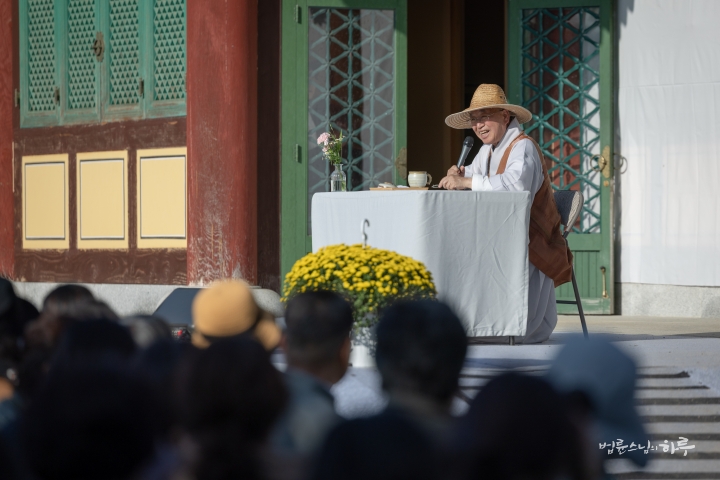
The same applies to perspectives on food. While some people are passionate about finding and eating delicious food, others eat anything. Among people I know, there was someone who emphasized eating tremendously, saying ‘eating is gaining.’ I’m the complete opposite – someone who doesn’t place much importance on eating. When I was young, I couldn’t understand waiting in line to eat. I also couldn’t understand traveling far just to eat. When people said they were driving out to eat, I’d say ‘Why not just eat nearby?’ I’d think, ‘If this place is crowded, just go to another place. Why wait in line to eat?’ But nowadays, traveling far and waiting in line to eat has become a culture. We can’t call such differences diseases.
If two people love each other but one has strong sexual desire while the other has none, the person with strong desire needs to understand and restrain themselves for their partner. Also, the person without sexual desire should accommodate their partner at least once a month even if they’re not in the mood. If your partner enjoys eating delicious food, you should go along even if you’re not interested. This is how you have to live, but fortunately, neither of you has major issues. First, there are cases where a partner has no or weak sexual desire.
Second, there are cases where the partner is homosexual. Homosexuality is different from having no sexual desire. Most men don’t feel sexual attraction to the same sex. However, homosexuals have sexual desire but feel no attraction to the opposite sex at all. In one case I counseled, the questioner’s German husband was homosexual. He married an innocent nurse from Korea and deceived her by saying he had no sexual desire. They adopted a child and lived together, and he would often go on three-month yacht trips around the world with his friends. Then one day, when he was almost 70, she discovered her husband was a sexual person. It turned out he was homosexual. In such cases, there would be no heterosexual attraction between spouses. 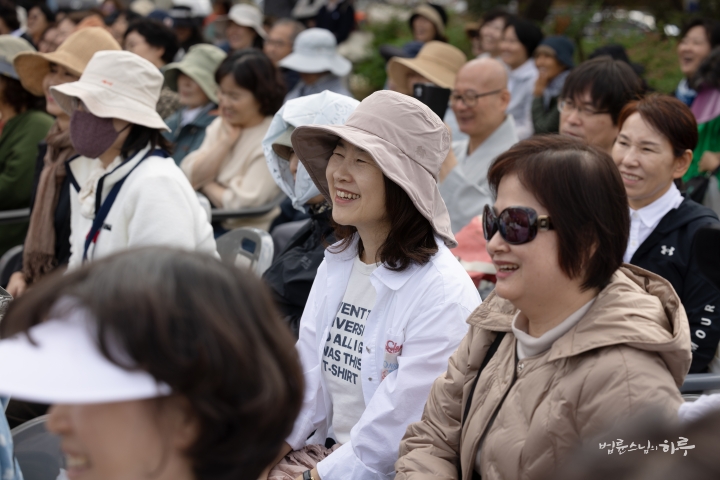
The third case is when he has someone else he likes, or he might be genuinely physically tired and finds it bothersome. In such cases, even if you try to talk with him, your husband won’t engage in conversation. However, from what you’ve told me, it doesn’t seem like your husband wants a divorce or has someone else, so there shouldn’t be any problems with maintaining your household together.”
“But won’t our marital relationship have a negative psychological impact on our child?”
“That’s not a problem at all. If you were stressed from suppressing your sexual desires and constantly harboring deep longing that’s psychologically repressed, then it would affect your child. In the long term, if the mother always appears stressed, it could influence the child. But if that’s not the case, there’s no particular problem. Even in temples, monks raise orphans. Do those children have problems? There’s no issue even without a mother or father. What matters is whether there’s stress in the nurturing environment – if not, there’s no major problem.” 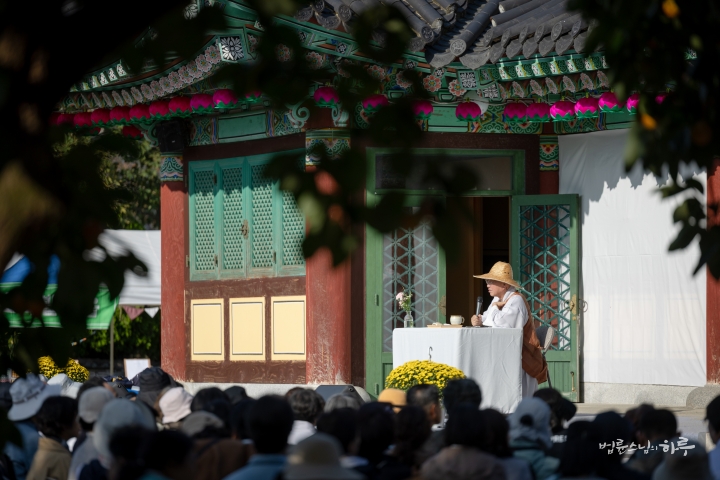
“My child was diagnosed with selective mutism in kindergarten and received psychological counseling for about a year. Things improved after that, but anxiety symptoms have appeared again in the last five months. When she was in kindergarten, I just took her to the hospital, but now she’s ten years old and understands the situation, so I’m hesitant about taking her. When I asked if she wanted to receive psychological counseling, she said no. So I’m not sure what to do. Should we still go?”
“The decision is up to you as the mother. However, with that level of anxiety, unless the child strongly resists, it would be good to take her to the hospital for treatment.”
“Yes, I understand. Thank you.”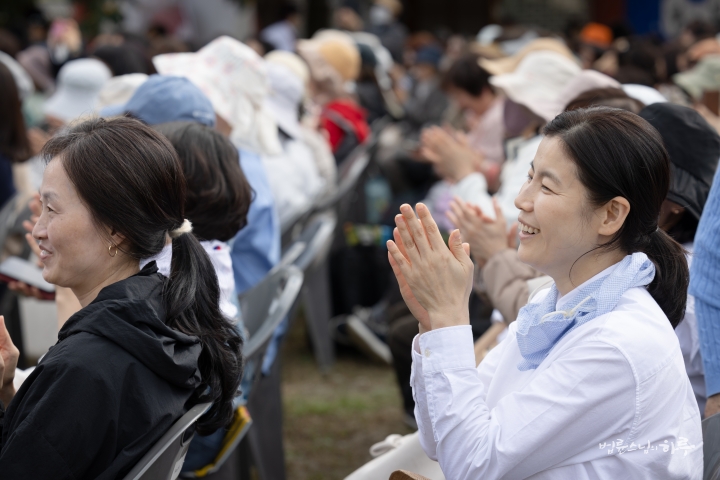
Questions continued one after another.
Why do graduates of the Buddhism Course and Sutra Course not continue their activities after joining as general members? As a facilitator, is it right to actively encourage members to participate in dharma propagation education?
What is the difference between Master Yongseong’s sudden enlightenment and the gradual enlightenment of general practitioners? How should we understand the essential meaning of enlightenment in practice?
Despite my business being stable, why is my motivation disappearing and my desire to work diminishing? In a situation where I can’t quit due to financial responsibilities, with what mindset should I work?
Is it okay to share personal events like family occasions with fellow practitioners during Jungto Society activities? What are the criteria for sharing and acknowledging general members’ personal events?
Time flew by as we laughed, clapped, and empathized together. At the end, with a little time remaining, questions were also taken from the audience. One person raised their hand high and got the last opportunity to ask a question.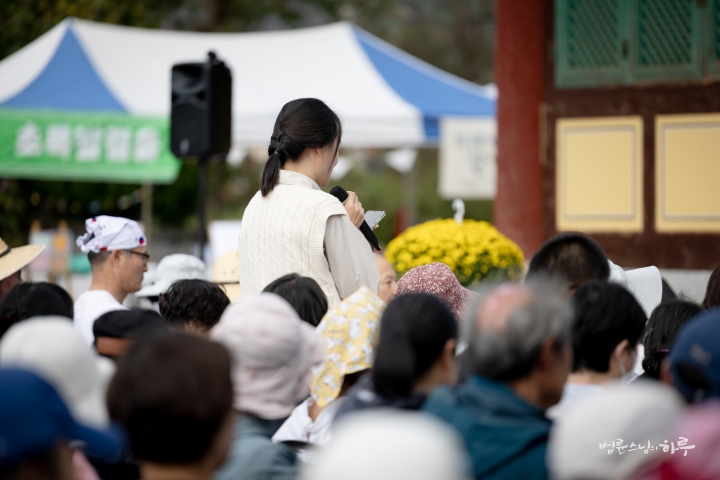
My Husband Talks Too Much – Why Is It So Exhausting to Be with Him?
“Just as you would cook for your husband if he likes food, or travel with him if he likes traveling, when your husband has a lot of stress and tries to release it through talking, please listen to him. Develop an understanding heart thinking, ‘This person has a lot of stress,’ and respond supportively. Even if your husband repeats the same story, say ‘Oh really? That must have been hard for you.’ I’m not saying you should curse the person your husband is talking about by saying ‘That guy did that?’ Rather, the proper listening attitude is to understand how your husband feels. When your husband gets angry and complains, understand that ‘My husband is angry now. He has feelings of hatred toward that person.’ Empathize by saying ‘Oh, I see,’ and listen a bit more actively. If you try not to listen to what your husband says, you’ll end up suffering too. Since your husband will pour it out verbally anyway, think of it as helping your marriage by listening. Listening is also a great merit.” 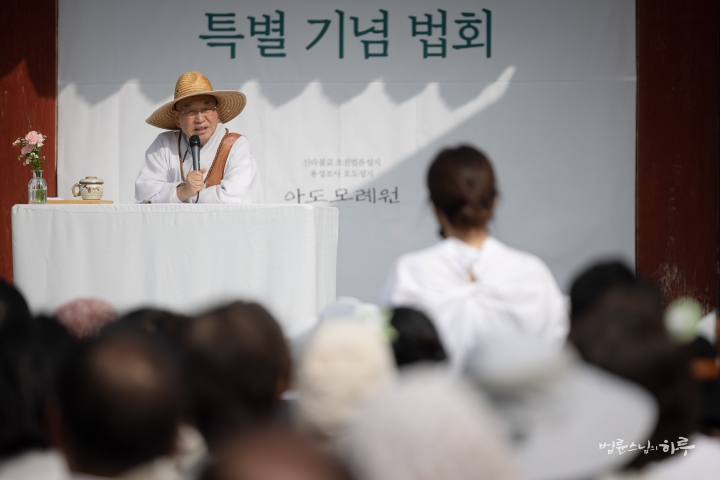
“My husband repeats the same story three times.”
“What does it mean when someone repeats the same story? It means your husband experienced psychological suppression during his childhood. This is why we shouldn’t scold children harshly. When a child eagerly says ‘Mom, me too, me too!’ wanting to say something, and you respond with ‘Shut up! That’s enough!’ and scold them too harshly, the child suffers psychological wounds. 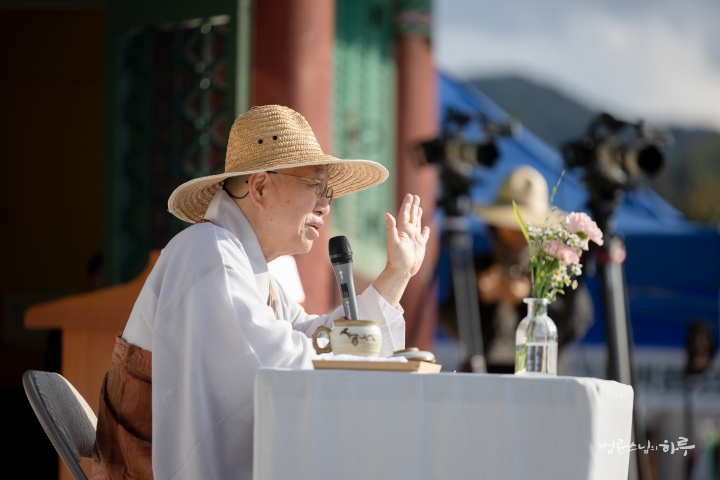
People with this kind of psychological suppression want to speak, and the words rise up to their throat, but they can’t actually get the words out of their mouth. Many of you probably experience this too. So when does this get released? After having a drink and getting slightly intoxicated, that’s when the words finally come out. If you observe people who get drunk and argumentative, they keep repeating the same things they’ve already said. Most of these people behave this way because they suffered psychological suppression and wounds during childhood. Since this is a kind of illness, the only thing you can do is listen to them. Listening is the best approach. When they were children, they lacked power, so when parents scolded them, they could be controlled. But now that they’re adults, they get angry and act out. We call this ‘acting drunk.’ They pick fights, yell, and behave violently.
In such situations, the first method is to listen to what they’re saying and pat them on the back – this is the best approach. However, if it becomes too difficult and you absolutely can’t handle it, the second method is to say something like ‘Honey, I need to use the bathroom for a moment’ or ‘Oh, I’m getting a phone call’ and excuse yourself. Don’t tell them to stop or say you don’t want to listen – just remove yourself from the situation. 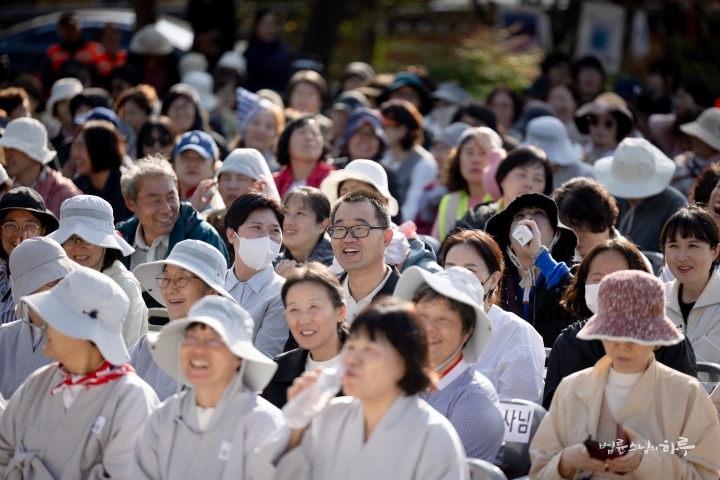
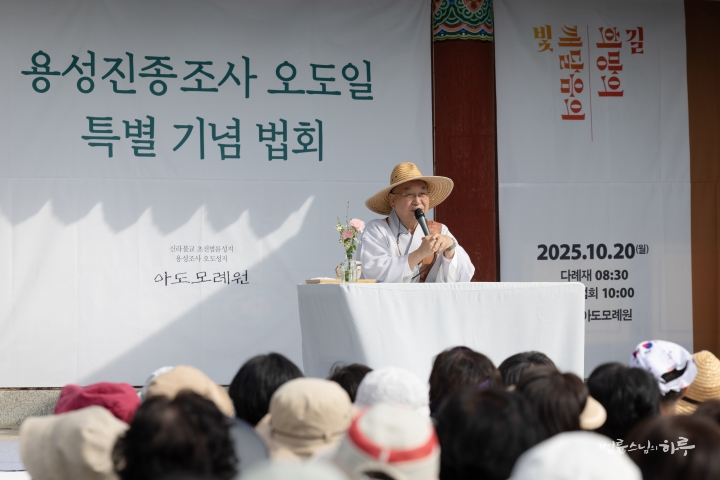
You shouldn’t stop your husband from speaking. If you tell him to stop, it will cause even greater wounds and won’t resolve anything. It’s better for you to actively listen to what your husband has to say. If that’s too difficult for you at your current level, the wisest approach would be to leave the room.”
“Thank you. I understand.”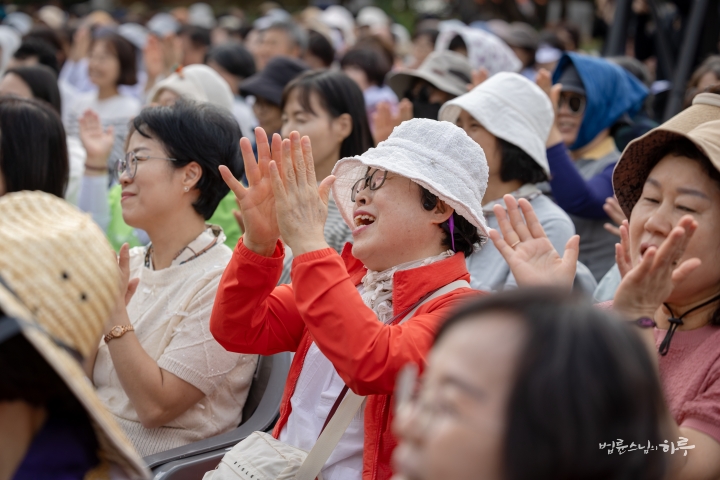
The Dharma Q&A concluded at 3:30 PM. The Members’ Day event ended with a big round of applause, followed by a group photo.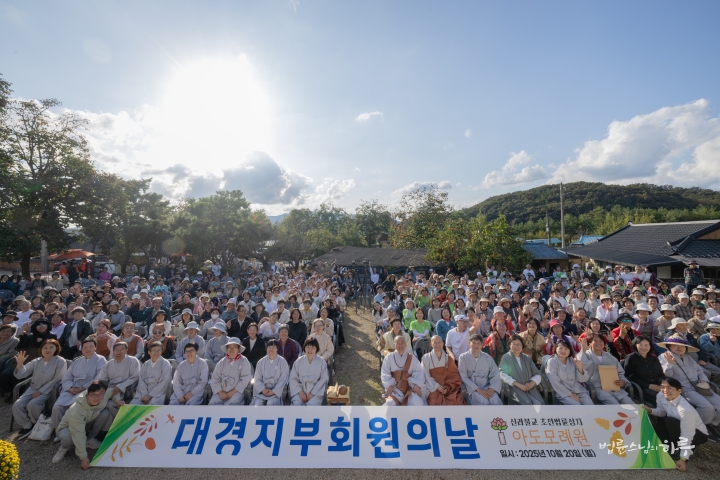
Following the morning memorial service for Master Yongseong’s enlightenment day, Sunim held an extended outdoor Dharma assembly for the Daegu-Gyeongbuk Chapter Members’ Day. Everyone enjoyed the autumn weather while strengthening their vow to spread the Dharma and fostering harmony among fellow practitioners.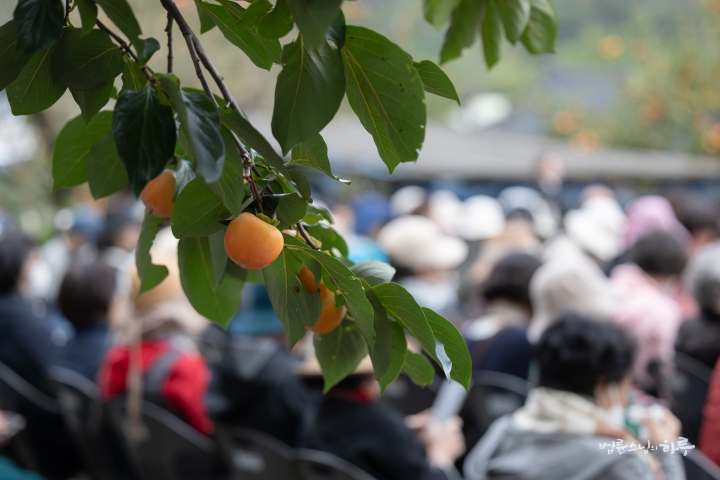
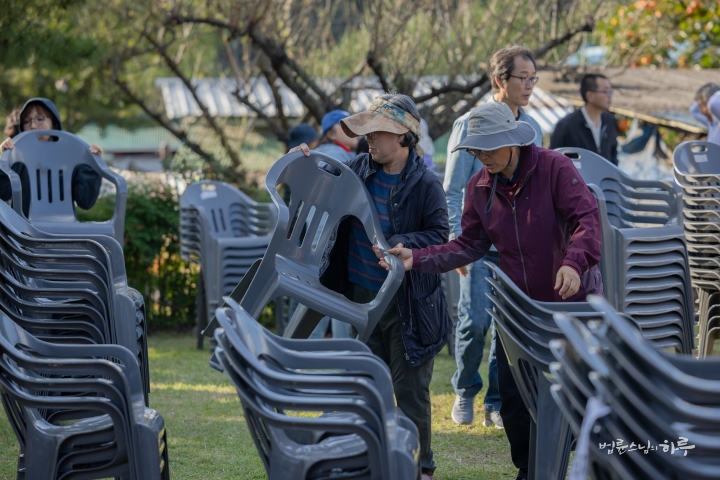
At 4:20 PM, Sunim departed from Adomoryewon and headed to Dubuk Jungto Retreat Center. Through the car window, golden autumn fields stretched endlessly.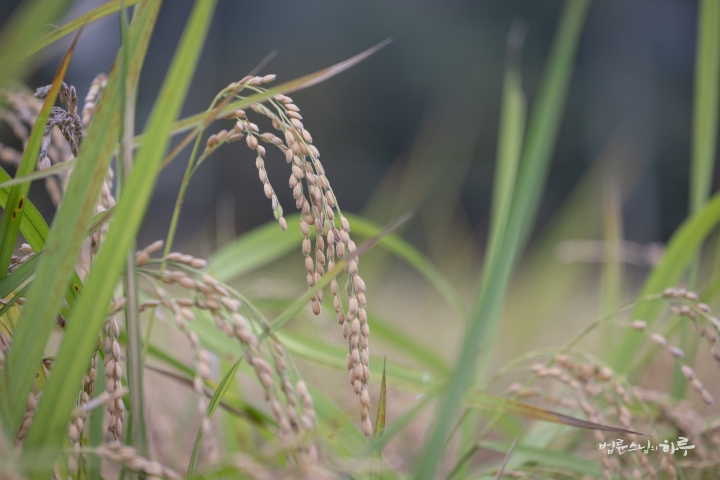
After an hour’s drive on the highway, Sunim arrived at Dubuk Jungto Retreat Center at 5:20 PM.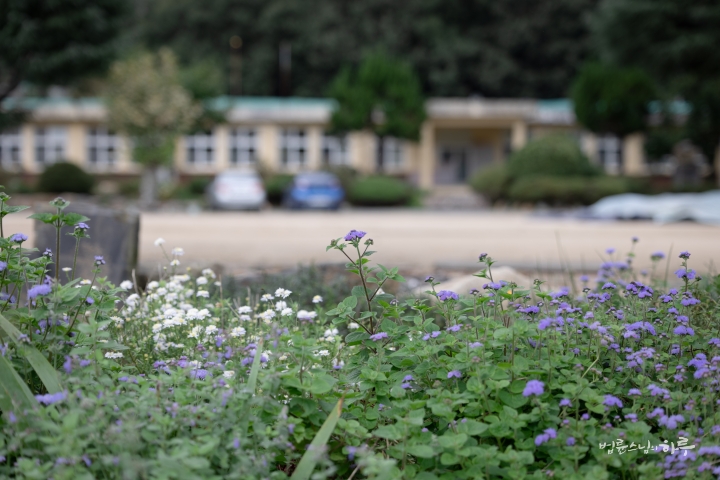
As the sun set, at 7:15 PM, Sunim held a meeting with the community Dharma Teachers to prepare for the India pilgrimage.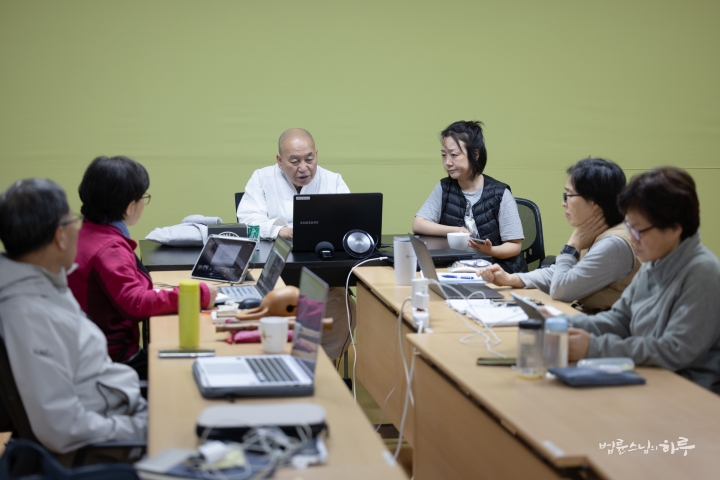
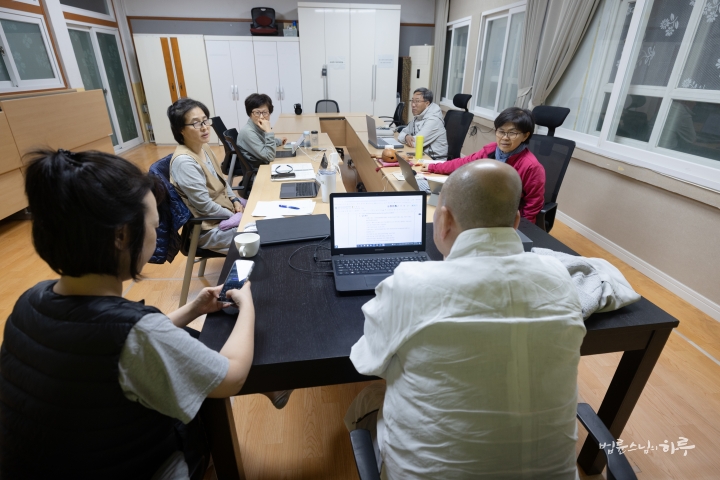
After reviewing the final participant status, they confirmed the bus rental plans and checked for any changes in the pilgrimage itinerary. The meeting concluded at 8:30 PM after an hour of discussion.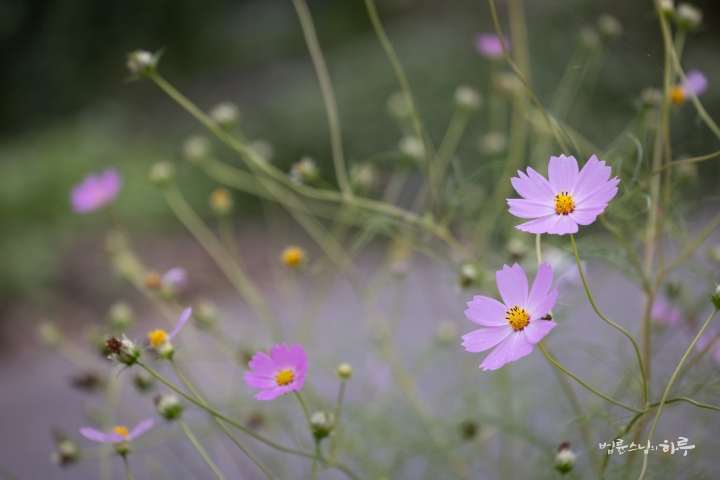
Tomorrow, Sunim will spend the entire day on an autumn outing with residents of Aegwangwon, a residential facility for people with intellectual disabilities, visiting Hwaeomsa Temple, the Jirisan History and Culture Center, and Cheoneunsa Temple. In the evening, he will give a Happy Dialogue Dharma Q&A lecture in Jinju.





